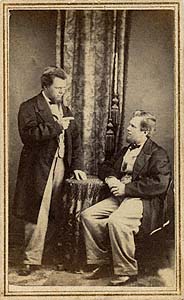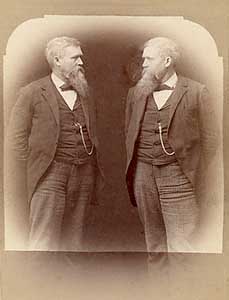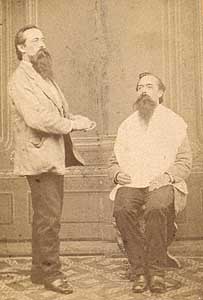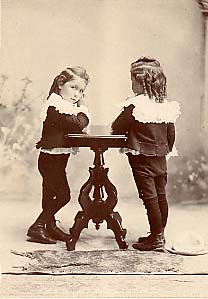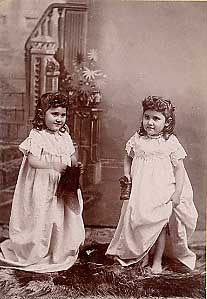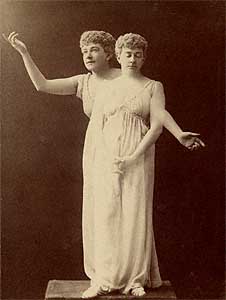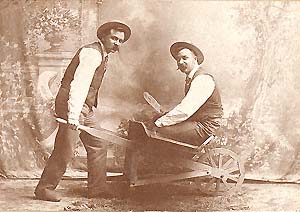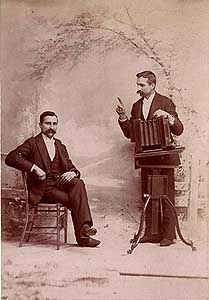|
The first artificially-created human clones date back to the 1860s. Clever photographers, ever on the watch for new ideas to boost business, developed several techniques to duplicate people — causing them to appear twice in the same photograph. “Every Man His Own Twin!” boasted one ad, neatly explaining the appeal of this novelty. These double-exposure images were no passing fad– they were popular for more than three decades.
Special plate-holders and rotating partial lens caps were among the devices used to expose half of the negative at a time. After the first exposure, the subject of the photograph would quickly move into a different position so the second half of the picture could be made.
Of course, real twins of various ages were also photographed in similar studio settings, making it difficult to determine which double portraits are the result of photographic manipulation. One indicator is the presence of a slightly lighter or darker line bisecting the photograph, but sometimes this line is so artfully concealed that the trick goes undetected.
In many cases, the novelty of camera-created cloning was enough to satisfy a studio’s clientele, but there is little of interest to the modern viewer in two awkwardly-posed portraits of the same person shown side-by-side. The images in this exhibition, however, demonstrate that creativity and imagination can elevate a technical innovation beyond the level of gimmickry. It’s an important lesson: even the most innovative digital effects of the 21st century can fall flat if they serve no narrative purpose.
|


